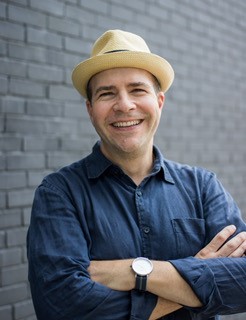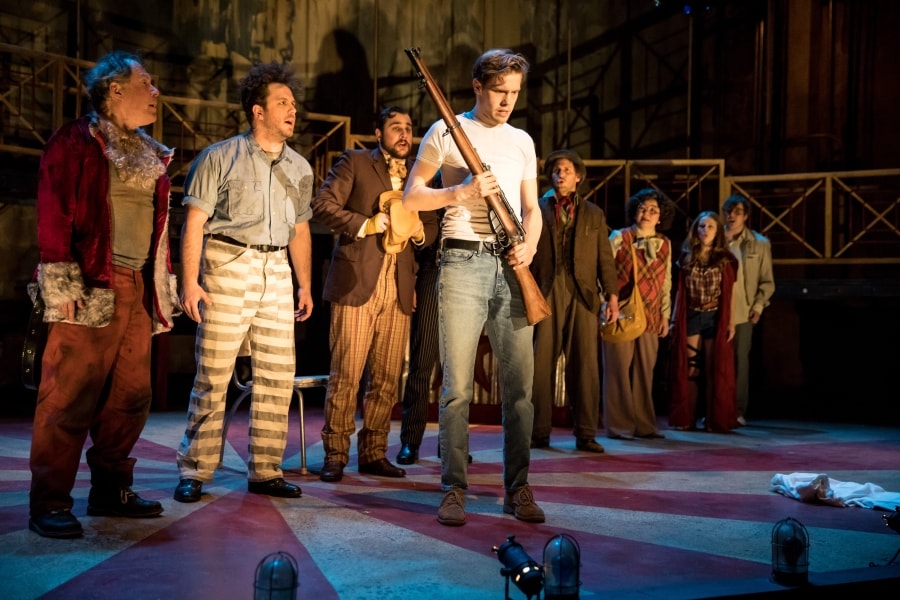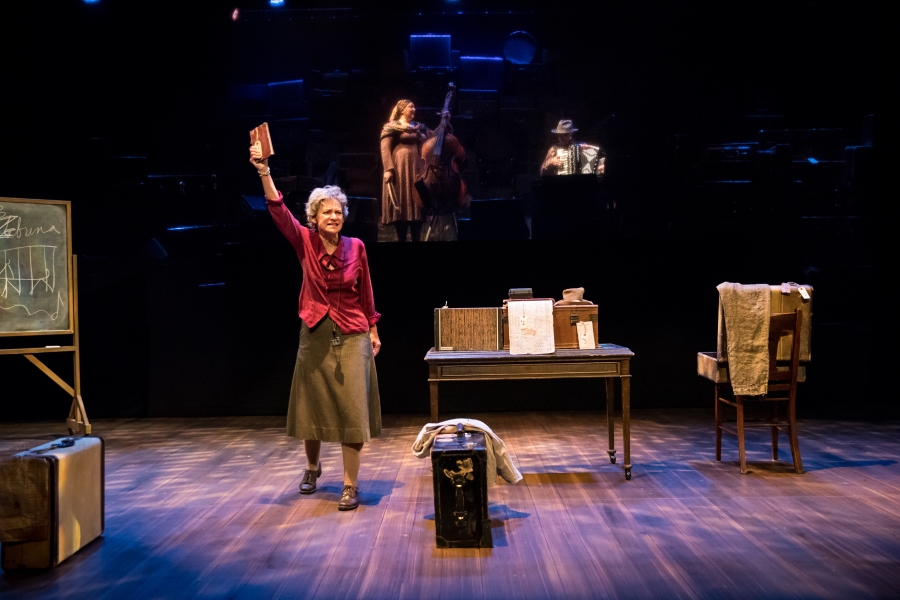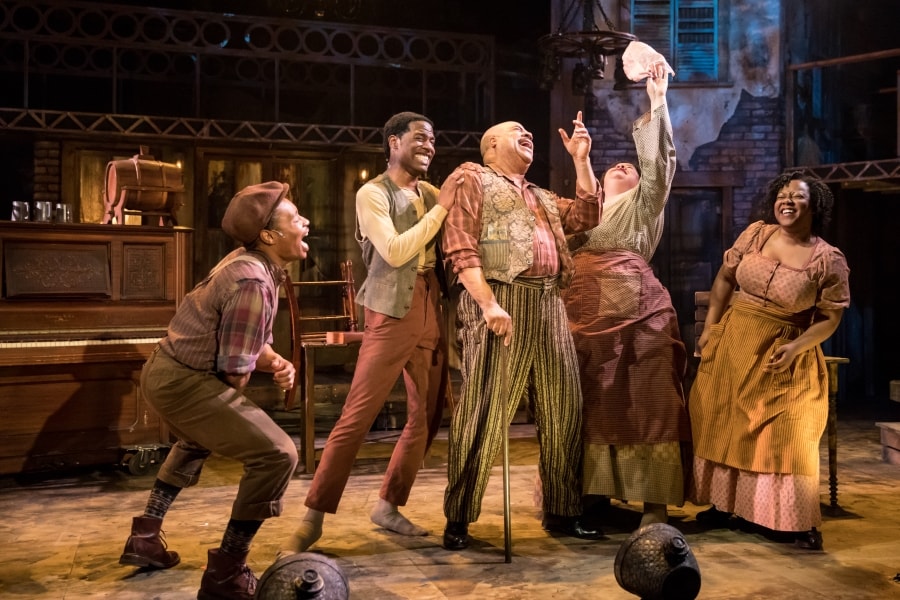MINNEAPOLIS: The Twin Cities are home to dozens of theatre companies and arts institutions. Among the many cultural offerings is Theater Latté Da, a musical theatre-focused company housed inside the historic Ritz Theater in the North Minneapolis Arts District. We spoke with co-founder and artistic director Peter Rothstein about producing tuners in Minneapolis.

Who founded Theater Latté Da, when, and why?
I co-founded Theater Latté Da with Denise Prosek, resident music director, in 1998. At that time there was very little musical theatre happening in the otherwise vibrant Twin Cities theatre community. The initial impulse came from actors who were longing to do adventurous musical storytelling.
Tell us about yourself and your connection to the theatre.
Denise and I went to high school together in northern Minnesota where we both fell in love with musical theatre. We reconnected in the Twin Cities after college and graduate school and have been collaborating ever since. We have both maintained freelance careers while building Theater Latté Da into one of the largest professional theatres in the Twin Cities.
What sets your theatre apart from others in your region?
We are committed to exploring and expanding the art of musical theatre. While our colleagues are programming musicals more frequently than they were 20 years ago, our rigorous and singular commitment to the future of the art form sets us apart. We have been the fastest growing professional theatre in the Twin Cities for several years, in terms of budget, programming, audience, and subscriptions. While serving Minnesota audiences, Theater Latté Da has also invested in being part of the national conversation surrounding the future of the American musical theatre.
How did Theater Latté Da get its name?
Funny you should ask. We started producing in a bohemian haunt in south Minneapolis. It had a grunge bar, a bowling alley, and a tiny cabaret space. We didn’t have a name and the manager needed one for the performance calendar. We were taking a rehearsal break and our waiter pointed out that everyone at the table had ordered a latté. We became Theater Latté Da and have debated changing it ever since.
So where’s the best place to get a latté near the theatre?
A few years ago we took over the Ritz Theater in Northeast Minneapolis. We are surrounded by fantastic independent coffee shops, breweries, and restaurants. You can get a terrific latté if you step 50 feet in any direction.

Who is your audience?
Our audience is looking to be challenged, looking for theatre that sparks a conversation about the current world. We prioritize creating time and space for that conversation to happen.
In a Latté Da production, music is always essential to the theatrical event. We believe music has the power to cross boundaries and connect people. Our work challenges us to maximize the power of music as a vital tool to breakdown barriers, whether they be cultural, linguistic, aesthetic, or generational. We strive to create an audience that reflects that connection.
We have experienced exponential growth in the past few years. That growth is reflected in both numbers and reach. We have deeply invested in our new neighborhood in Northeast Minneapolis, building partnerships with the neighborhood’s schools, businesses, associations and service organizations. We have also had a national presence, taking our productions to Seattle’s 5th Avenue Theatre and Florida’s Asolo Repertory Theatre. Theater Latté Da began touring original work in 2008 and has now performed in more than 75 cities throughout the US and Canada. Our production of All Is Calm: The Christmas Truce of 1914 will have an Off-Broadway run this coming November and December.
Tell us about your favorite theatre institution other than your own, and why you admire it.
There are so many. Truly. If I had to select one at this moment it would be Ten Thousand Things Theater. I have been fortunate to direct for the company numerous times. Michelle Hensley’s commitment to creating theatre for marginalized audiences while striving for artistic excellence has had a profound impact on my work. It reshaped my thinking around play selection, aesthetics, and the immediacy of the theatrical event.
How do you pick the musicals you put on your stage?
Our associate artistic director, Elissa Adams, plays a leading role in season planning and selection. It is a rigorous process, seeking out dynamic work and innovative concepts that resonate with the current world and speak to a diversity of audiences. We seek out stories that need to be told at this moment in history. We look to stretch the boundaries of musical storytelling in terms of both content and form. Our board of directors plays a significant role in the vetting process, which I believe leads to deeper engagement in the organization’s mission, vision, and values. The process for selecting new work is a significantly different process that involves a diverse panel of writers and other practitioners.
What’s your annual budget, and how many artists do you employ each season?Our annual budget is $2.7 million. We employ and average of 250 artists each season.

What show are you working on now? Anything else in your season that you’re especially looking forward to?
Our production of Underneath the Lintel by Glen Berger just closed. We collaborated with Glen to adapt his one-man play into a one-woman play with music, featuring an original score by Frank London of the Klezmatics.
And we are in the final stages of casting our NEXT Festival, including new musicals or plays with music by Harrison David Rivers, Jaqueline Ultan, Michelle Kinney, Angelica Cheri, Ross Baum, Ryan Underbakke, Matt Spring, Max Wotoniwitz, Nikki Swoboda, and Michael Gruber,
Strangest or funniest thing you’ve ever seen (or put) on your stage?
Underneath the Lintel was presented in our relatively new home, the Ritz Theater. There is a door house left that leads out to an alleyway. I decided to start the show by having the Librarian, played by Sally Wingert, knock on the outside door. There was no pre-show announcement, no house-to-half, the theatrical event began with a pounding on the door adjacent to those seated house left. Underneath the Lintel is a one-person show and there is no fourth wall; the audience is the Librarian’s ultimate scene partner. I wanted to give the audience agency—the show literally wasn’t going to start until one of them opened the door. It was fascinating to observe the group psychology as they navigated whether or not the knock on the door was a part of the play and whether or not to open it. The moment was at once immediate, dangerous, and playful.
What are you doing when you’re not doing theatre?
My husband Omar is from Mexico. We spend as much time as we can visiting his family and their beautiful country.
What does theatre—not just your theatre, but the American or world theatre—look like in, say, 20 years?
Omar and I seek out live performance when we are in Mexico. Sometimes it looks and feels like what our theatre looks and feels like in the States, but more times than not it feels somehow more communal. Often performance happens in public spaces, it’s participatory, it features live music and ultimately includes sharing a meal or beverage.
I don’t have an clear picture of what the American Theatre will look like in 20 years, but our efforts are made in hope that it will look like something I can’t yet imagine, something closer to a World Theatre, ever redefining itself to reflect the broadest definition of the community it reflects and serves.


